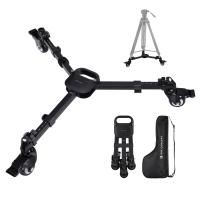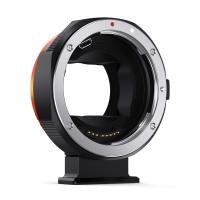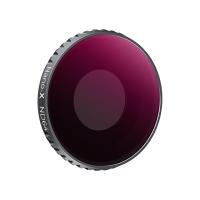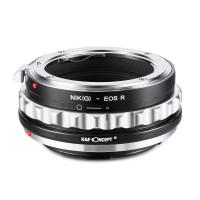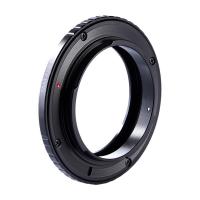What Does An Endoscopy Show ?
An endoscopy is a medical procedure that involves inserting a flexible tube with a light and camera into the body to visualize and examine the internal organs or structures. The specific information that an endoscopy can reveal depends on the area being examined. For example, an upper gastrointestinal endoscopy can show the lining of the esophagus, stomach, and upper small intestine, helping to diagnose conditions like ulcers, inflammation, or tumors. A colonoscopy, on the other hand, allows visualization of the large intestine and can detect abnormalities such as polyps or signs of colorectal cancer. Other types of endoscopy, such as bronchoscopy or cystoscopy, provide insights into the respiratory system or urinary tract, respectively. Overall, an endoscopy helps doctors to visually assess the condition of internal organs and identify any potential abnormalities or diseases.
1、 Visualization of the gastrointestinal tract using a flexible tube.
An endoscopy is a medical procedure that allows doctors to visualize the gastrointestinal tract using a flexible tube called an endoscope. This tube is equipped with a light and a camera, which enables the doctor to examine the lining of the esophagus, stomach, and the upper part of the small intestine.
During an endoscopy, the endoscope is inserted through the mouth and guided down the throat and into the digestive system. The camera on the endoscope transmits real-time images to a monitor, allowing the doctor to examine the tissues and identify any abnormalities or conditions that may be present.
An endoscopy can provide valuable information about various gastrointestinal conditions. It can help diagnose and evaluate conditions such as gastroesophageal reflux disease (GERD), ulcers, gastritis, celiac disease, and even certain types of cancer. It can also be used to detect and remove polyps, which are abnormal growths that can potentially develop into cancer.
In recent years, advancements in endoscopic technology have allowed for more precise and detailed imaging. High-definition cameras and advanced imaging techniques, such as narrow-band imaging and chromoendoscopy, have improved the ability to detect subtle abnormalities and early signs of disease. Additionally, specialized endoscopes can be used to examine specific areas of the gastrointestinal tract in more detail, such as the bile ducts or the colon.
Overall, an endoscopy is a valuable tool in diagnosing and monitoring gastrointestinal conditions. It provides a direct visualization of the digestive system, allowing doctors to accurately assess the health of the gastrointestinal tract and provide appropriate treatment.
2、 Examination of the esophagus, stomach, and upper small intestine.
An endoscopy is a medical procedure that involves the examination of the esophagus, stomach, and upper small intestine using an endoscope, which is a flexible tube with a light and camera attached to it. This procedure allows doctors to visually inspect the lining of these organs and identify any abnormalities or conditions that may be present.
During an endoscopy, the endoscope is inserted through the mouth and guided down the throat into the esophagus. It then continues into the stomach and finally reaches the upper small intestine. The camera on the endoscope transmits real-time images to a monitor, allowing the doctor to carefully examine the internal structures and identify any issues.
An endoscopy can reveal a variety of conditions and provide valuable information about the health of the digestive system. It can help diagnose and monitor conditions such as gastroesophageal reflux disease (GERD), peptic ulcers, gastritis, esophagitis, Barrett's esophagus, and even certain types of cancer.
In recent years, advancements in endoscopic technology have allowed for additional procedures to be performed during an endoscopy. For example, tissue samples (biopsies) can be taken for further analysis, and certain treatments can be administered directly through the endoscope. This includes the removal of polyps or early-stage tumors, the dilation of strictures, and the control of bleeding.
Overall, an endoscopy is a valuable tool in the diagnosis and management of various gastrointestinal conditions. It provides a direct visualization of the esophagus, stomach, and upper small intestine, allowing doctors to accurately assess the health of these organs and provide appropriate treatment.
3、 Detection of abnormalities such as ulcers, tumors, or inflammation.
An endoscopy is a medical procedure that involves the use of an endoscope, a flexible tube with a light and camera attached to it, to examine the inside of the body. It is commonly used to investigate and diagnose various conditions in the digestive system, respiratory system, and other organs.
During an endoscopy, the endoscope is inserted through a natural opening in the body, such as the mouth or anus, or through a small incision. The camera on the endoscope allows the doctor to visualize the internal organs and tissues in real-time on a monitor. This procedure provides valuable information about the condition of the examined area.
One of the primary purposes of an endoscopy is the detection of abnormalities. It can reveal the presence of ulcers, which are open sores that develop on the lining of the digestive tract. Ulcers can be caused by various factors, including infection, medication, or excessive acid production. Endoscopy can also identify tumors, both benign and malignant, which may require further investigation or treatment. In addition, it can detect inflammation, which can be a sign of various conditions such as gastritis, esophagitis, or colitis.
It is important to note that the field of endoscopy is constantly evolving, and new advancements are being made to improve the accuracy and effectiveness of the procedure. For example, advanced imaging techniques, such as high-definition endoscopy and narrow-band imaging, have been developed to enhance the visualization of abnormalities. These techniques provide better contrast and detail, allowing for more accurate diagnosis and treatment planning.
In conclusion, an endoscopy is a valuable diagnostic tool that can detect a range of abnormalities, including ulcers, tumors, and inflammation. It plays a crucial role in the early detection and management of various medical conditions. With ongoing advancements in technology, endoscopy continues to evolve, providing healthcare professionals with better tools to improve patient care and outcomes.
4、 Evaluation of digestive symptoms like abdominal pain or difficulty swallowing.
An endoscopy is a medical procedure that involves the use of a flexible tube with a light and camera at the end, known as an endoscope, to examine the digestive tract. It is commonly used to evaluate digestive symptoms such as abdominal pain or difficulty swallowing.
During an endoscopy, the endoscope is inserted through the mouth or anus and carefully guided through the esophagus, stomach, and small intestine (upper endoscopy) or the rectum and colon (lower endoscopy). The camera on the endoscope allows the doctor to visualize the lining of the digestive tract and identify any abnormalities or conditions that may be causing the symptoms.
An endoscopy can provide valuable information about various digestive disorders. It can help diagnose conditions such as gastroesophageal reflux disease (GERD), peptic ulcers, gastritis, esophagitis, celiac disease, Crohn's disease, ulcerative colitis, and colorectal cancer. It can also be used to detect and remove polyps or other abnormal growths in the digestive tract.
In recent years, there have been advancements in endoscopic technology that have improved the accuracy and effectiveness of the procedure. For example, high-definition imaging allows for better visualization of the digestive tract, and narrow-band imaging can enhance the detection of subtle abnormalities. Additionally, advanced endoscopic techniques such as endoscopic ultrasound and endoscopic retrograde cholangiopancreatography (ERCP) enable the evaluation of deeper structures and the collection of tissue samples for further analysis.
Overall, an endoscopy is a valuable tool in the evaluation of digestive symptoms. It allows doctors to directly visualize the digestive tract and obtain important diagnostic information. However, it is important to note that the decision to perform an endoscopy should be made by a healthcare professional based on the individual's symptoms and medical history.










